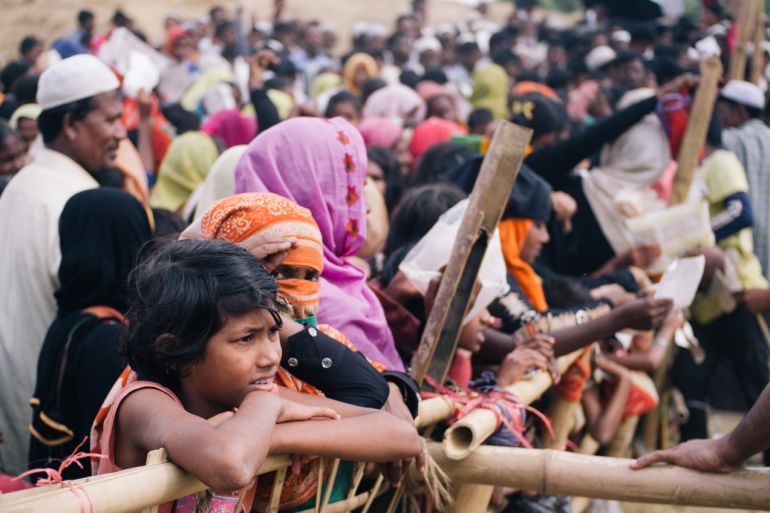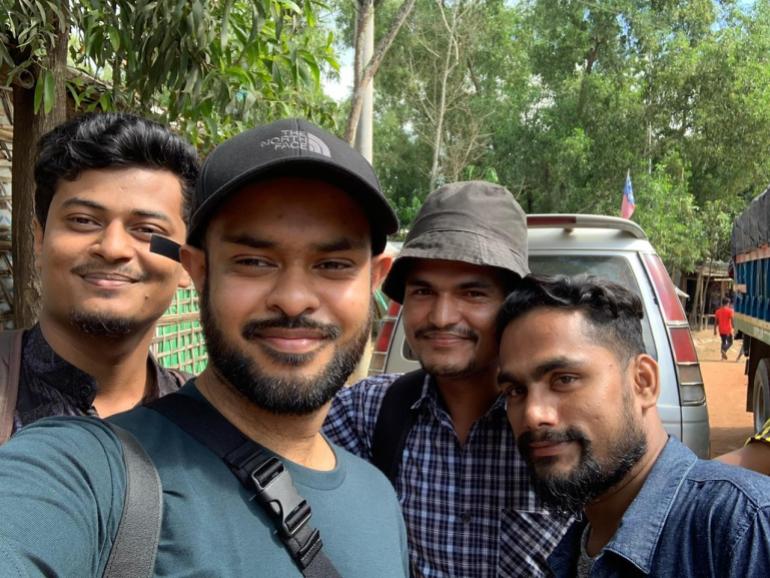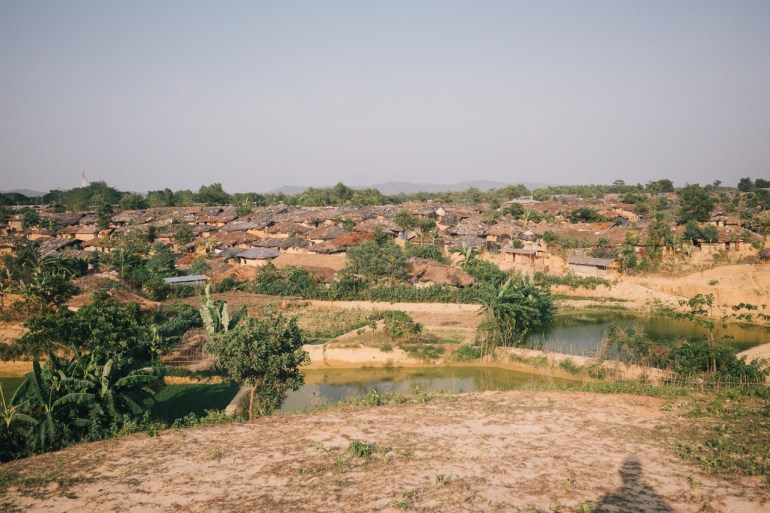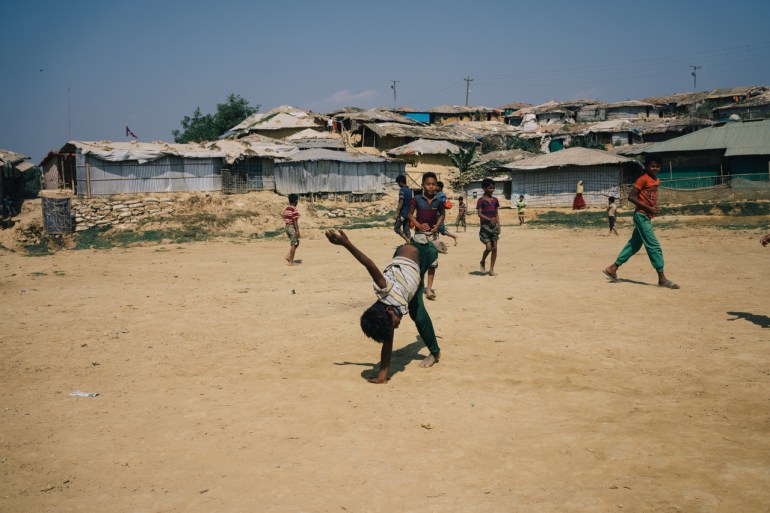‘Everywhere they go, the Rohingya are exploited’
Kaamil Ahmed, a British journalist, on his new book about the Rohingya’s extraordinary suffering.

Kaamil Ahmed, a British journalist, has covered the Rohingya crisis for eight years.
Currently a reporter at The Guardian, he has made multiple trips to Bangladesh, where an overwhelming majority of the Rohingya reside in exile, to investigate and document the livelihoods of a people considered one of the world’s most persecuted.
Keep reading
list of 4 itemsUN reports ‘alarming’ rise in Rohingya deaths at sea in 2022
HRW accuses Bangladesh police unit of ‘rampant’ Rohingya abuse
Myanmar jails 112 Rohingya who tried to leave country
Rendered stateless by Myanmar in 1982, the decades-long plight of the Rohingya came to the world’s attention in 2012, when deadly violence against the group broke out in Rakhine state of this Southeast Asian country – leading to a mass exodus.
The largest flight of the Rohingya took place five years later, when the Myanmar army killed more than 6,000 people and forced some 700,000 to cross into Bangladesh.
According to witnesses and rights groups, the military burned and razed dozens of Rohingya villages and fired indiscriminately, killing women and children – events that saw the Myanmar government accused of carrying out genocide.
Ahmed’s book, I Feel No Peace: Rohingya Fleeing Over Seas and Rivers, is an in-depth exploration of the Rohingya in exile, their exploitation, quests for justice, and the apparent failures of world bodies such as the United Nations to protect them.

Al Jazeera: Most people in the world first came to know about the Rohingya in 2012, when deadly violence in Rakhine broke out. What drew you to the crisis?
Kaamil Ahmed: It was just before 2012 when I first came across the Rohingya, I had never heard of them before.
I saw an interview. The language was a little bit unusual. It’s similar to Bengali, but there were some differences. It was very interesting that these people you’d never heard of existed. I was intrigued and wanted to understand who they were. I started paying more attention, read about them as much as I could.
Al Jazeera: Your book covers the origins of the Rohingya, the decades of violence against them and legislation passed through the years by the Myanmar state – such as the 1982 bill making them stateless. It also covers their refugee journey. What do you hope readers connect with?
Ahmed: The books that have come out about the Rohingya have often focused a lot on Myanmar – and I didn’t want to make this about the Rohingya in Myanmar.
I wanted to make it about the Rohingya as refugees, because there’s an important story to be told about what continues to happen to them beyond Myanmar … but it was important to understand how they got to this point – how not addressing all of the things that happened in those [past] decades led to where they are now. They were returned twice, in 1978 and in the 1990s … when hundreds of thousands went to Bangladesh in a majority.
They were returned to relative quiet, but not to peace or safety. International bodies and all the people who worked and decided all these things about when they should return … were just like “OK, it’s a bit quiet now”. None of the underlying issues was resolved. The laws and restrictions, and the whole kind of police state they lived under, none of that was ever addressed.
![Rohingya children carrying firewood [Courtesy of Kaamil Ahmed]](/wp-content/uploads/2023/02/Firewood9-1.jpeg?w=770&resize=770%2C510)
Also, there’s always this question – who are they and where did they come from. Myanmar says they’re intruders who were brought by the British.
That argument is based on the assumption that borders have been fixed and people have historically been fixed to certain spots. History shows us that the borders between Bengal and Arakan (Rakhine state) have shifted, just as the people on either side of those borders have. Populations on either side have cultural influences from so many places.
Al Jazeera: During your first encounter with a Rohingya man, Nobi (not his real name), in 2015 in a Bangladesh refugee camp, you describe him as “nervous”, especially around security officers. How were you then able to build a relationship with the community?
Ahmed: With time. I went many times [to refugee camps] and spent a few weeks there. I didn’t go speak to them and disappeared once my story was done. I kept coming back. I kept talking to them. Even between 2015 and 2017, when I didn’t have a chance to go back, I used to speak to Nobi over Facebook. Listening is like the most important thing. It’s not the writing … the part you put out. It’s the time we give for the input.
They told me more basic stuff at first … the general kind of how they’re living. However, when they realised I was coming back and spending time, and willing to keep talking to them, they would keep telling me more. They would approach me when they had something to say.
Al Jazeera: Non-Rohingya authorities do not really feature in the book. Was that intentional or did they largely refuse to speak?
Ahmed: The point of the book was that this should be about their [Rohingya] voices, what they’re saying and what they’re experiencing. Not really what the officials want to say. I’ve spoken to them, I know what they say.
Al Jazeera: The plight of Rohingya women has been documented over the years. Are they more vulnerable, in your view?
Ahmed: I think so. There are a lot of women who are by themselves for various reasons. One of the most obvious is that their husbands were killed in Myanmar, and so they arrived by themselves [in Bangladesh and elsewhere].
They’re looking after their children on their own. And if they’re looking after their children, it’s very hard for them to do any kind of work – because there’s not really much work they’re allowed to do or able to do.
And if there is work, it’s labour work that men are preferred for. So they’re vulnerable because they don’t have much income, and they can’t leave their children because there’s no one else.

In almost any refugee camp or place of extreme poverty, a lot of the social glue breaks down. People become desperate.
Middle brokers are very active and there are many ways in which they work. One way is that they will say, “We can take you to Thailand or Malaysia“.
The other is, “Why don’t you come and work for a Bangladeshi family, as a domestic worker?” But then you get there, you don’t get paid and get trapped.
In 2018, a Rohingya man approached me in the camps, he said that his family had fled Myanmar ahead of him and while they were in the camps, his wife, who was struggling to get by on her own, was convinced by a trafficker to let her daughter go and work for a Bangladeshi family. They were told it would only be a few months but the girl wasn’t allowed to return and her family couldn’t visit.
Al Jazeera: You are fairly critical of the Bangladesh government and its policies towards the Rohingya. Others would say the country, which is afflicted by poverty, is too burdened.
Ahmed: At the end of the day, if Bangladeshi policies are harsh and restrictive, they need to be reported.
I also think Bangladesh sometimes gets criticised without being given support. There’s a very token bit of charity here and there, but not substantial support. It is in a tough position and it’s been … it’s getting less aid. Because budgets are shrinking, it’s getting less aid with bigger demands – a growing population, people having kids, being asked to give education.
When the Bangladesh state minister for foreign affairs came to London, I interviewed him, and he made the point – everyone wants us to give an education programme [to the Rohingya], but no one is giving us the money for it.
It’s a big strain on resources and it’s not getting anything. And this is the point in the book … the lack of international help, the lack of a real solution.

Al Jazeera: Are global organisations culpable?
Ahmed: This is something that is true in many places. The UN … will often bow to the pressure of governments … to be able to do the real basics. They have to accept whatever a government does, and not really push back, because they just need the government to allow them to be there.
[But] the role of the UN is not to just give food and shelter – they’re supposed to protect people from being repatriated unsafely.
The fact that in the 1990s, their own report suggested they had a role in people being sent back by force, that’s an issue that needs to be raised.
Al Jazeera: What’s the main takeaway of your book?
Ahmed: What’s happened to the Rohingya didn’t happen in a month or two. It didn’t stop or start with massacres. It happened over decades.
It’s a people that were completely marginalised and excluded. And it continues abroad. Once they’re refugees, it doesn’t stop.
Everywhere they go, they’re exploited – by people, drug gangs, traffickers and governments. There is no resettlement for them, there’s no citizenship. So they are just completely stuck, completely stateless.
You can almost map it out, wherever they go, there is someone, some criminal element along that way, that exploits them. It’s continuing violence.
Editor’s note: This interview was lightly edited for clarity and brevity.